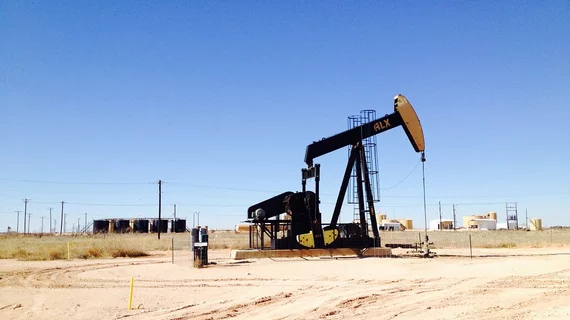Living near oil, gas wells linked to worse cardiovascular health
Colorado residents who live in close proximity to oil and natural gas extraction sites might experience poorer cardiovascular health because of it, according to work published Dec. 6 in Environmental Research.
The study, headed by Lisa M. McKenzie, PhD, MPH, and colleagues at the University of Colorado Anschutz Medical Campus, analyzed 97 men and women living in Fort Collins, Greeley and Windsor, Colorado. The authors said an upward trend in oil and gas extraction, fracking, horizontal drilling and micro-seismic imaging means U.S. residents are increasingly being exposed to potentially harmful noise and emissions.
“More than 17.4 million people in the U.S. now live within one mile of an active oil and gas well,” McKenzie said in a release. “While behavioral and genetic factors contribute to the burden of CVD, exposure to environmental stressors, such as air pollution, noise and psychosocial stress also contribute to cardiovascular morbidity and mortality.”
McKenzie and her team’s study complements recent reports, which have found that both an excess of noise and an excess of the kind of particulate matter emitted from oil and gas operations can contribute to a decline in cardiovascular health.
The 97 participants enrolled in the trial were tobacco- and marijuana-free and held jobs that didn’t expose them to dust, fumes, solvents or oil or gas development activities. None of them had a history of diabetes, chronic obstructive pulmonary disease or chronic inflammatory disease.
The researchers collected between one and three measures of each patient’s augmentation index (a non-invasive measure of arterial stiffness), systolic and diastolic blood pressure (SBP and DBP) and plasma concentrations of interleukin-1B, -6, -8 and tumor necrosis factor alpha. The intensity of oil and gas activity around an individual’s residence was calculated by weighting well counts within 16 kilometers of a person’s home by intensity and distance.
Between October 2015 and May 2016, McKenzie et al. found that participants who lived closer to oil and gas wells saw worse cardiovascular health. Compared to the lowest-exposure tertile, adjusted mean augmentation index differed by 6 percent and 5.1 percent between those with high and medium exposure to wells, respectively. The greatest concentrations of interleukin and tumor necrosis factor alpha, two markers that have been associated with psychosocial stress and short-term exposure to air pollution, were found in those with the greatest exposure to oil and gas operations.
“We are not sure whether the responsible factor is noise or emissions from the well pads or something else, but we did observe that with more intense oil and gas activity around a person’s home, cardiovascular disease indicator levels increased,” McKenzie said.
SBP and DBP results were consistent in participants taking prescription medications, though the adjusted mean SBP was elevated by 6 mm Hg and 1 mm Hg in the high and medium groups, respectively, versus the low exposure tertile. Associations for DBP were similar.
McKenzie said that while she and her colleagues’ pilot study is small, it indicates the need for more research with a greater number of participants. In the meantime, the team’s data seem to correlate well with results from similar studies.
“Our study findings support the use of these indicators of cardiovascular disease in future studies on oil and gas development in residential areas,” she said.

